Shadows
A shadow is formed where light is 'missing'.
A dark shadow (umbra)
is formed where no light falls and a light shadow (penumbra)
is formed where some light falls, but some has been 'blocked' (absorbed or reflected away).
| If the light source is very tiny and concentrated
in one place (a point source) only a sharp shadow is formed - an umbra. |
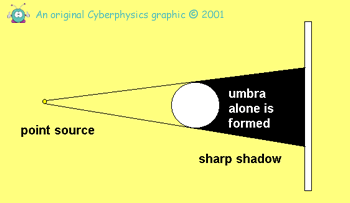 |
If the light source is broader light from
the top of the source causes a lower shadow than that from the top.
You therefore get partial shadow or penumbra as well as umbra. |
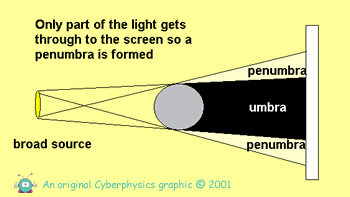 |
If we use coloured lights at different points
we can see the effect of these multiple shadows:
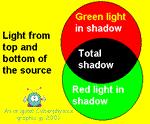
|
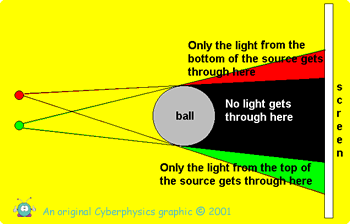 |
| The size of a shadow changes as you move
the source closer or further from the screen |
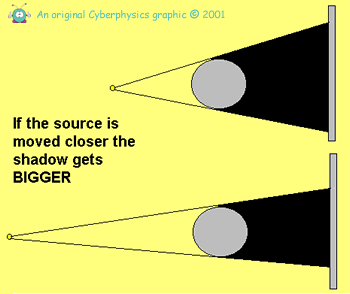 |
| ..... or as you move the object closer or further
from the screen. |
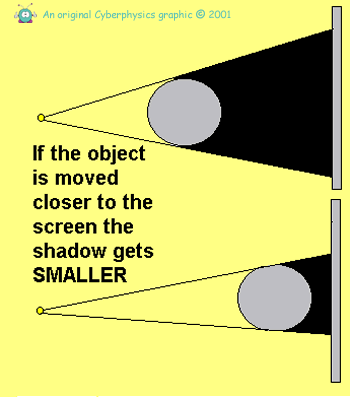 |
 These terms of 'umbra' and 'penumbra' are used to express ideas
in astronomy
These terms of 'umbra' and 'penumbra' are used to express ideas
in astronomy
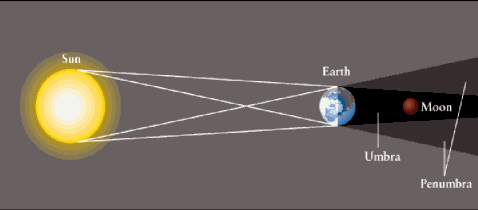
So, why are some shadows lighter than
others?
 How dark a shadow is depends on the lighting
conditions that create it.
How dark a shadow is depends on the lighting
conditions that create it.
 If there is only once point source of light,
then when it is blocked, no light will reach the shadowed area and the
shadow will be dark.
If there is only once point source of light,
then when it is blocked, no light will reach the shadowed area and the
shadow will be dark.
 If there is a lot of reflection, diffuse light,
or multiple light sources, however, the shadow will be lighter.
If there is a lot of reflection, diffuse light,
or multiple light sources, however, the shadow will be lighter.
Shadows Formed Outside - from sunlight or moonlight
 On a sunny day, most of the light is coming
directly from the sun, but some of it is coming as blue scattered light
coming from the sky. On a sunny day, most of the light is coming
directly from the sun, but some of it is coming as blue scattered light
coming from the sky.
This hits you at all angles as it comes from all
directions.
Therefore, if you stand in front of the sun, the sun's light
is blocked, but your shadow still recieves light from the rest of the
sky, and you can still see the shadowed ground.
 On a cloudy day, the
light is completely diffuse, not coming from anywhere in particular,
and you don't cast much of a shadow at all. On a cloudy day, the
light is completely diffuse, not coming from anywhere in particular,
and you don't cast much of a shadow at all.
|
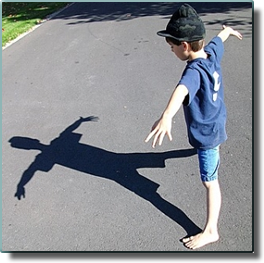 |

Now try some questions on this topic.
Click the graphic to go to them.
LOJ (June 2001) - revised 2017
